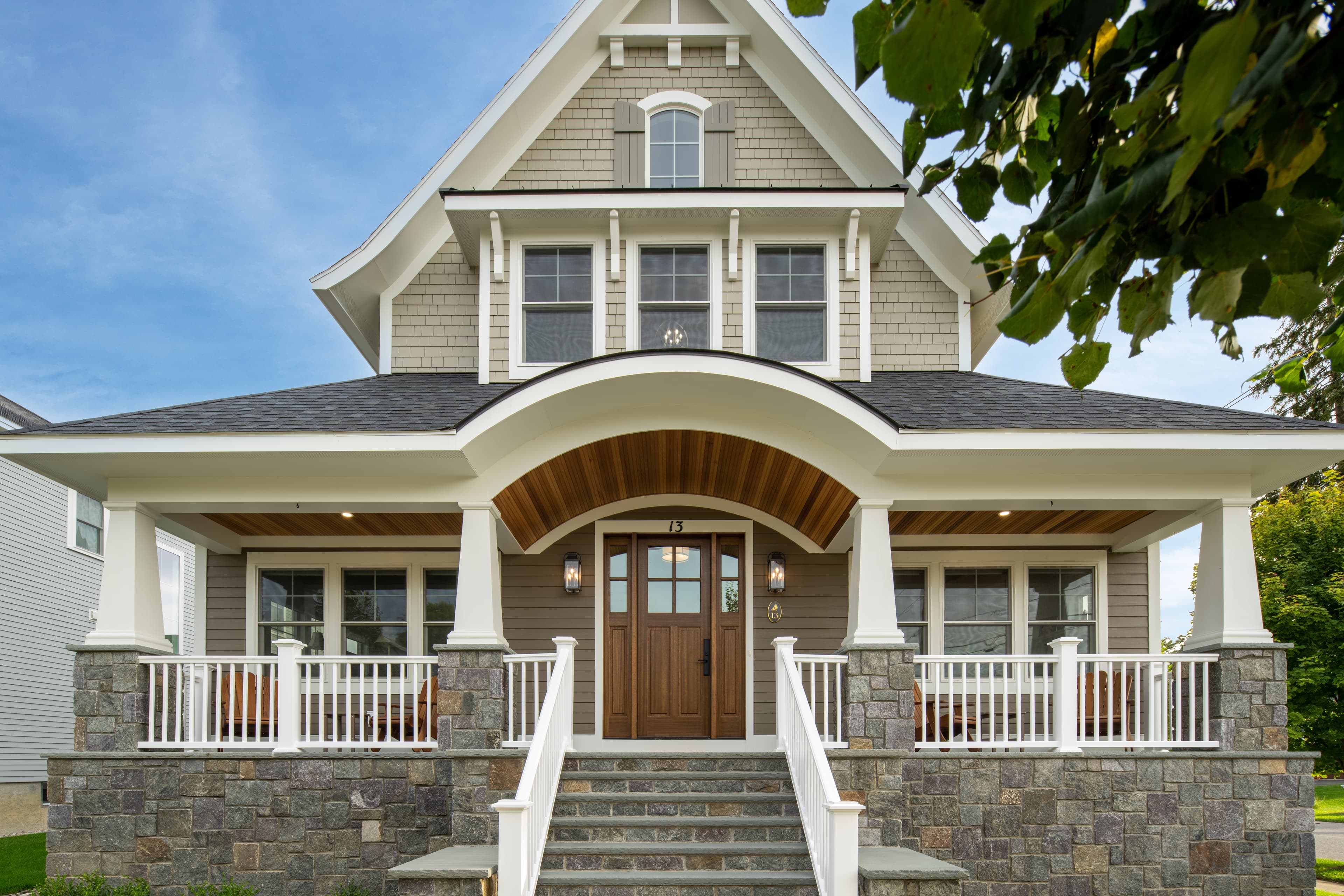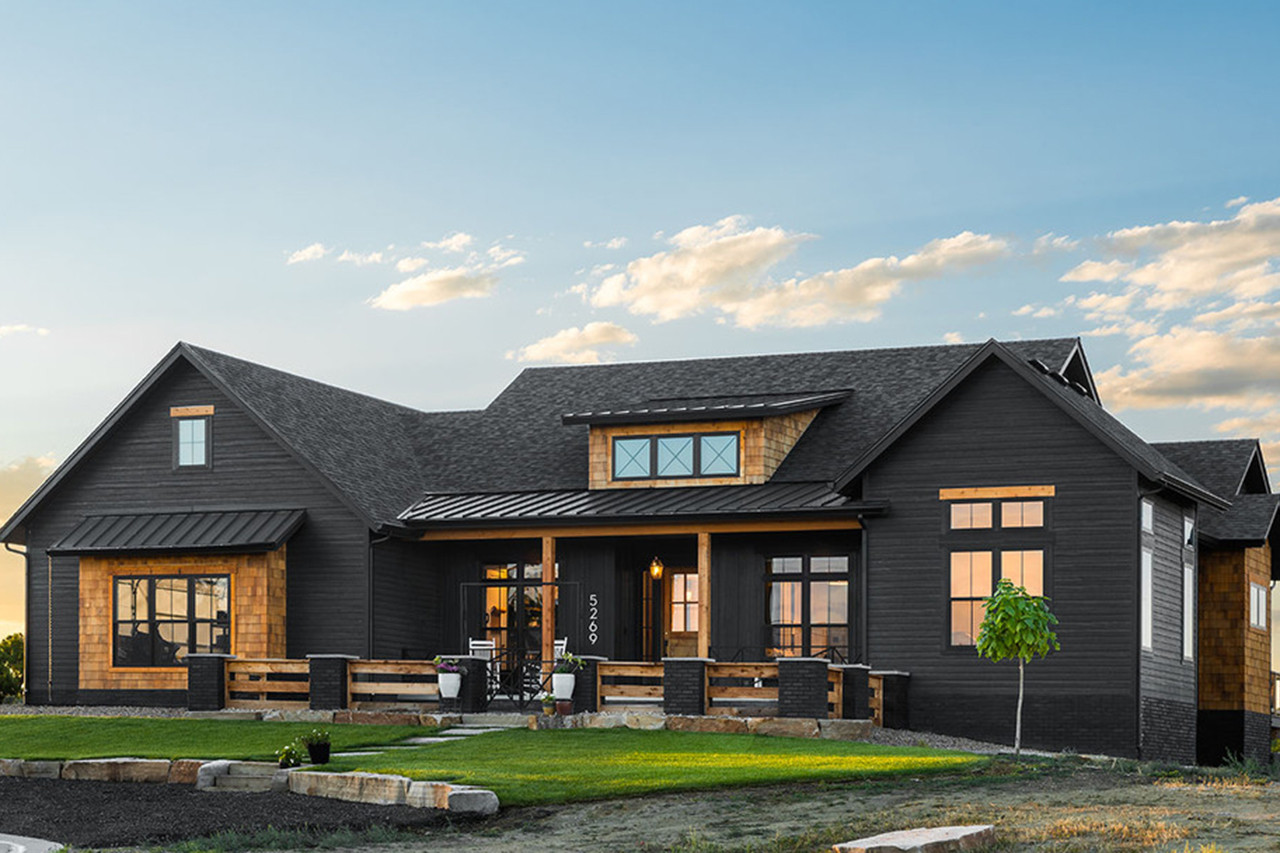Current Inspirations in craftsman style house Architecture
Wiki Article
The Function of Arts & & Crafts Architects in Elevating Architectural Providers in Residential Design
Arts and Crafts architects considerably affect residential design with their dedication to craftsmanship and sustainability. They focus on handcrafted details and all-natural products, which enhance both looks and community identity. By involving customers in the layout process, these architects produce special space that reverberate with individual preferences. This approach questions regarding the future trajectory of domestic architecture and its prospective impact on community dynamics. craftsman style house. What lies in advance for this ageless design viewpoint?
The Principles of Arts and Crafts Architecture
The essence of Arts and Crafts architecture depends on its commitment to craftsmanship and simpleness. This building motion emerged in the late 19th century as a feedback to industrialization, stressing the value of handcrafted details and all-natural products. The principles of Arts and Crafts architecture focus on functionality and harmony with the setting. Structures normally feature low-pitched roof coverings, large eaves, and exposed rafters, advertising a feeling of unity with nature.Artisans played a substantial duty in this style, often integrating ornamental elements like stained glass, tiles, and woodwork, which mirror local workmanship. The shade palette often tends to be earthy and subdued, enabling structures to blend flawlessly right into their environments. In addition, the style urges open layout and communal spaces, fostering a feeling of togetherness. In general, the principles of Arts and Crafts architecture celebrate the elegance of simplicity and the value of human connection to both nature and neighborhood.

Sustainable Practices in Residential Design
While the need for eco accountable living remains to grow, sustainable techniques in property design have gained considerable grip among architects and homeowners alike. Architects are significantly incorporating energy-efficient technologies and sustainable materials right into their layouts, intending to lower carbon impacts and enhance power conservation. Methods such as easy solar layout, green roof coverings, and rainwater harvesting systems are becoming standard parts of modern-day property architecture.Additionally, the option of in your area sourced products reduces transport exhausts and supports local economic situations. Emphasis on natural light and air flow not only enhances interior air quality yet additionally minimizes dependence on man-made lighting and environment control systems. These lasting methods mirror a commitment to preserving the environment while offering property owners with comfortable, effective space. As recognition of ecological issues grows, the assimilation of sustainability in residential design is poised to come to be a defining attribute of modern architecture, led by the principles established by Arts and Crafts architects.
Modification and Customization in Home Layout
Customization and customization in home style have become vital fads in response to the growing need for distinct living atmospheres that mirror private preferences and way of lives. Home owners progressively seek to tailor spaces that reverberate with their individual identities, leading to a more purposeful connection with their living spaces. craftsman style house. This motion urges architects to involve customers in the design process, promoting partnership that ensures the last result symbolizes the property owner's visionElements such as bespoke formats, custom materials, and customized coatings enable a varied array of expressions in household layout. Arts and Crafts architects play an essential role in this development, emphasizing craftsmanship and quality. Their concentrate on incorporating creative aspects with capability assurances that each home is not just aesthetically pleasing yet likewise distinctly fit to the citizens' demands. As a result, this focus on personalization boosts the overall property experience, creating rooms that are both personal and long-lasting.

The Influence of Arts and Crafts Architects on Neighborhood Aesthetic Appeals
As communities advance, the influence of Arts and Crafts architects substantially forms their aesthetic landscape. By highlighting handmade details, natural products, and conventional construction techniques, these architects develop homes that reverberate with their environments. Their layouts usually include neighborhood plants, textures, and colors, fostering a feeling of consistency between built settings and reference nature.Furthermore, the Arts and Crafts motion promotes area identity via architectural connection. By urging house owners to adopt similar style concepts, communities create a cohesive personality that boosts aesthetic charm. This building harmony not just improves the visual experience yet additionally instills a sense of pride among locals.
Moreover, the emphasis on sustainability and craftsmanship in Arts and Crafts architecture straightens with contemporary values, making these styles appropriate in modern setups. Inevitably, Arts and Crafts architects add considerably to the overall beauty and cultural stability of neighborhoods, leaving an enduring influence on their aesthetic heritage.

Future Patterns in Arts and Crafts Architecture
With an increasing emphasis on sustainability and personalization, future patterns in Arts and Crafts architecture are poised to mix traditional craftsmanship with modern-day technology - craftsman style house. Architects are most likely to prioritize eco-friendly products, using recovered timber and all-natural stone to boost the sustainability of property styles. The integration of clever home technology will certainly end up being typical, enabling personalized living experiences without compromising aesthetic honestyIn addition, the revival of artisanal techniques will certainly promote a renewed admiration for handmade elements, such as bespoke kitchen cabinetry and customized floor tile work. Future designs may additionally show an emphasis on community-oriented spaces, encouraging interaction and link among citizens. Outdoor living areas will get prestige, flawlessly incorporating nature right into the home environment. As Arts and Crafts architecture progresses, it will certainly remain to honor its origins while adjusting to modern requirements, producing unified areas that reflect private values and lifestyles.
Frequently Asked Concerns
What Motivated the Arts and Crafts Movement in Architecture?
The Arts and Crafts movement in architecture was motivated by a reaction versus automation, highlighting handmade quality, all-natural materials, and a go back to standard workmanship, aiming to develop harmonious, practical rooms that commemorated artistry and uniqueness.Exactly how Do Arts and Crafts Architects Collaborate With Clients?
index Arts and crafts architects collaborate with clients through open dialogue, focusing on personal requirements and aesthetics. They highlight workmanship and sustainability, cultivating a partnership that incorporates the customer's vision with the engineer's competence in design and products.What Products Are Frequently Used in Arts and Crafts Residences?
Usual materials in Arts and Crafts homes consist of all-natural wood, stone, and brick, highlighting workmanship and organic visual appeals. These aspects create a warm, welcoming atmosphere, mirroring the motion's devotion to high quality and simpleness in layout.Exactly how Do Arts and Crafts Styles Boost Indoor Living Areas?
Arts and Crafts styles enhance interior home by promoting all-natural light, open flooring strategies, and handcrafted details. These components foster a warm, inviting ambience, motivating a link between homeowners and their settings through thoughtful, functional aesthetic appeals.What Are Some Famous Examples of Arts and Crafts Architecture?
Famous instances of Arts and Crafts architecture include the Gamble Home, Greene and Greene's masterpiece in The golden state, and the Robie House by Frank Lloyd Wright. These here are the findings frameworks display handcrafted information and consistency with nature, specifying the motion's essence.Report this wiki page